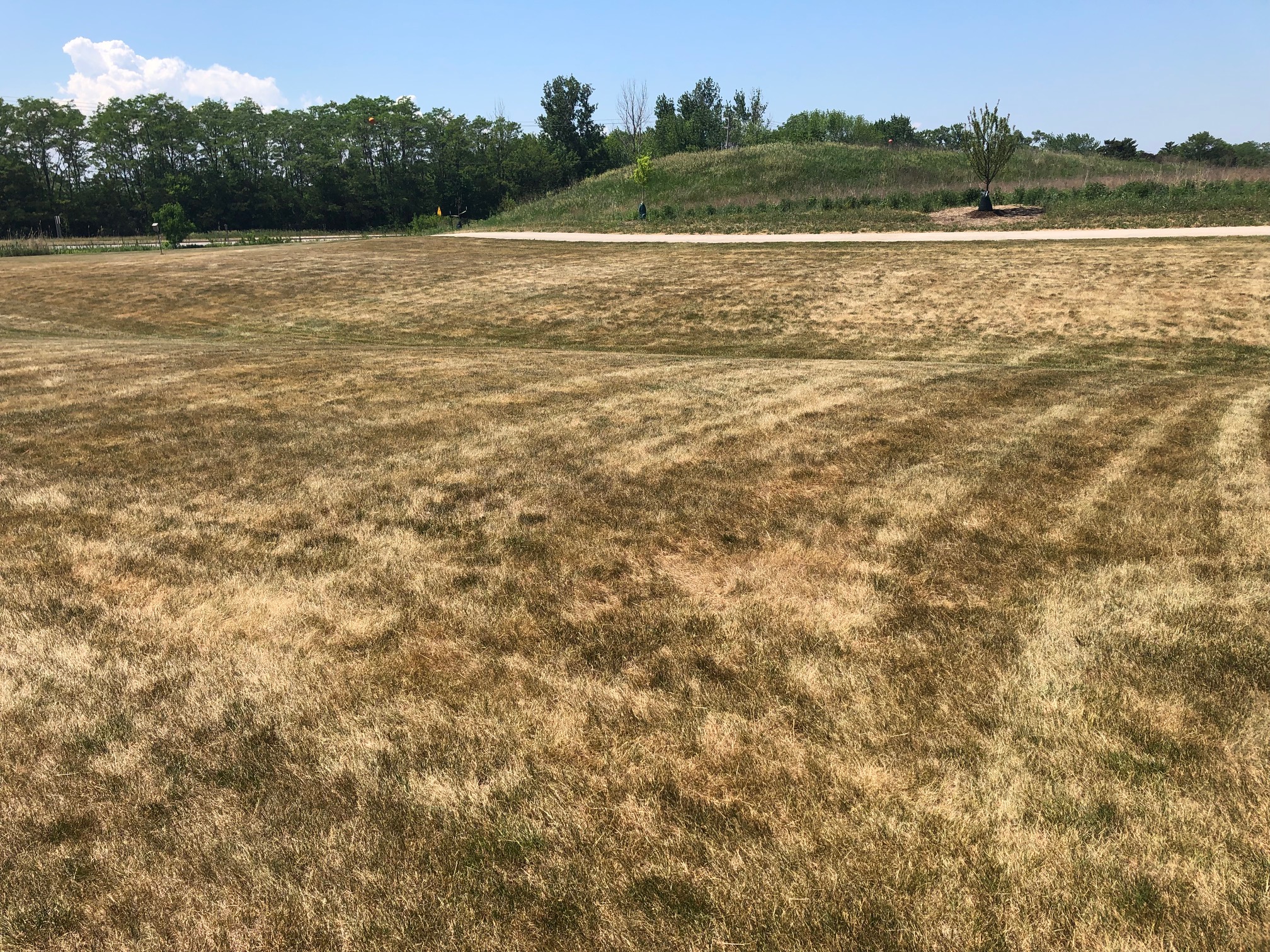By Vijai Pandian, Horticulture Educator, Milwaukee, Kenosha and Racine Counties
In summer, Wisconsin may be subject dry or drought conditions. These conditions can affect many landscape and garden plants.
Lawn grass has gone dormant, moisture sensitive trees are exhibiting signs of scorch leaves, defoliation, early fall coloration and branch dieback; Wilted strawberries are producing low quality fruits, flowering annuals and vegetable crops are in desperate need for daily water. Under drought stress, many plants shut down their specialized leaf tissue openings to minimize the dehydration loss. However continuous drought condition can lead to internal head load and limits the plant vital gas and nutrient exchange causing partial or complete collapse of the plant. Drought stressed plants are highly vulnerable to pest (insect and disease) and winter damages.
There are things you can do! When watering, make sure to follow good watering practices. Below are some tips to mitigate drought stress on trees and shrubs, flowering annuals and vegetables, herbaceous perennials, fruits and berries, and lawns.
Protecting trees and shrubs during drought
- Give trees a good soaking water once or twice a week. Newly planted trees and shrubs (1-3 years old) need twice a week of watering to about one inch depth (0.6 gallons of water is needed to cover an inch deep per square foot). If trees and shrubs are mulched, place the soaker hose underneath the mulch to ensure the soil root zone gets adequate water. Or use 15-20 gallon Tree gator bags on young trees that drips on the root ball.
- Control any weeds or turf growing underneath the tree’s dripline area. Weeds and turf compete with trees for water.
- Spread wood chip mulch to about 3-4 inches deep and keep it 6 inches away from tree trunk. Avoid volcano mulching around the tree trunk.
- Don’t fertilize drought stress trees and shrubs.
- Avoid unnecessary pruning or transplanting of trees and shrubs.
- Want more information on caring for your trees and shrubs during drought? We have more resources.
Protecting flowering annuals and vegetable crops during drought
- Mulch your vegetable crops and flowering annuals using clean straw or hay, rice hulls or leaf mold.
- Before watering, check the soil moisture by poking a finger an inch deep in to the soil media. If the soil is dry, give a good soaking water around its root zone area. Shallow containers and 6” deep raised beds may require twice a day watering.
- Water gently around the base of the plants and avoid splashing on its leaves. Morning hours are good for watering plants.
- Control any weeds by mulching or hoeing.
- Avoid frequent fertilization of your crops, if needed, use granular products containing some slow-release formulation and water it immediately after application.
Protecting herbaceous perennials during drought
- Water the perennials when the soil surface dries out moderately. Place the soaker hose few inches away from the crown of the plant and water to an inch deep (0.6 gallons of water is needed to cover a one inch depth for one square foot). If using a wand, direct the flow of the water around the base of the plant.
- Avoid overhead watering to prevent foliar diseases. Water early in the morning to reduce evaporation loss.
- Mulch helps in conserving soil moisture and smothering annual weeds. Use shredded wood or bark mulch to a depth of 3 inches.
Protecting fruit and berry plants during drought
- Provide 3 to 5 gallons of water per week for young fruit trees. Use drip irrigation system or hand water the young fruit trees on regular basis throughout the season.
- Frequent shallow watering to a total of 1 to 1.5 inches per week is critical for small fruit crops like raspberries, blueberries and strawberries. Under hot and dry condition, water the strawberries daily.
- Maintain weed free zone around the base of the fruit and berry crops.
- Mulch using shredded bark, saw dust or wood chips to about 3 inches deep.
Protecting lawns during drought
- In general, it is best to let the lawn grasses go dormant to overcome heat and drought stress. However, prolong drought stress for more than 8 weeks can kill the crown of the grass. To help thrive the crown, water the lawn once a week to an inch deep. Water early in the morning to avoid evaporation loss and to prevent the spread of diseases.
- Warm and dry condition favors chinch bug population in lawn. Check out Extension publication in diagnosing and controlling chinch bugs in lawn.
- Don’t fertilize lawn grasses during hot and dry periods, as fertilizer is a type of salt which can further dehydrate the plants by absorbing moisture from the root zone. Also, excess salt concentration can burn the feeder roots.
- Avoid spraying ester formulated lawn herbicides when temperatures exceed 80-85°F, as the herbicide can easily volatilize causing drift injury on desired plants.
- Want more information on caring for your lawn during drought? We have more resources.






